


























E-mail: mark.forker@ cpimediagroup.com




























E-mail: mark.forker@ cpimediagroup.com
The UAE is seen as one of the most progressive countries in the world when it comes to AI technology.
HE. Omar Al Olama made history when the UAE appointed him the Minister of State for Artificial Intelligence in October 2017.
The shining jewel in the UAE’s AI crown has been Dubai, and the Emirate is one of the most innovative and technologically advanced cities in the world.
However, the announcement of the Dubai Universal Blueprint for Artificial Intelligence in May, by H.H. Sheikh Hamdan bin Mohammed bin Rashid Al Maktoum, has only served to reinforce and enhance Dubai’s global reputation as an AI powerhouse.
The Dubai Universal Blueprint for Artificial Intelligence, a yearly plan focused on harnessing the potential of technology to achieve quality-of-life focused outcomes.
The program has been established in a bid to place Dubai as the No.1 hub for Artificial Intelligence.
"Through the first phase of the plan for this year, we will work on appointing a Chief Artificial Intelligence Officer in every government entity in Dubai, launch AI and Web3 incubators as well as announce an AI Week in educational institutions. Land for data centres will be fast tracked, and a new commercial licence for artificial intelligence will be introduced,” said Sheikh Hamdan.
This announcement of the Dubai Universal Blueprint for Artificial Intelligence was the prevalent theme during our annual GovTech Innovation Awards, which is our front cover feature for June’s edition of CNME.
Our GovTech Innovation Awards celebrate the Government leaders from the IT ecosystem who are leveraging the transformative capabilities of technology to pursue and implement innovative programs that are ultimately designed to enhance the lives of the city’s residents and citizens.
As we highlighted during our panel discussion, the Government leaders present at our GovTech Innovation Awards, are going to be responsible for executing the goals and objectives of this revolutionary new AI strategy.
We can only imagine the progress that will be made from now until our GovTech Innovation Awards 2025, but it is truly such an exciting time for Dubai, and it is a privilege to be able to cover this incredible period of transformation for Dubai and the UAE.
In addition to the coverage from our GovTech Awards, we have as always, some fantastic interviews.
Ashley Woodbridge has enjoyed a remarkable career in IT, and the charismatic Australian is one of the most revered and respected technology thought leaders across the Middle East region.
As a technology journalist it can be an exhausting exercise trying to keep up with all the new trends and concepts emerging as technology continues to evolve at a rapid pace.
The latest concept to enter the public domain in the burgeoning GenAI revolution, is that of RAG (Retrieval Augmented Generation).
According to Woodbridge it is the perfect foil to take the popular public LLMs such as ChatGPT safely into the enterprise space.
You can check that interview out on pages 10-13.
We also covered the new strategic alliance between OPTIMAS, UiPath and Global Vistas Global.
The companies are on a mission to transform traditional organisational risk management. Check out the full interview on pages 14-17.
Meriam El Ouazzani, is the Regional Sales Director, Middle East, Turkey & Africa at SentinelOne.
In a wide-ranging discussion, the experienced channel leader outlined how their 'Purple AI' offering within its Singularity Platform, which she believes will transform the security experiences of their end-users.
Check it out on Page 18.
Vibhu Kapoor, Regional Vice President Middle East, Africa & India at Epicor, gives our readers a play-by-play account of the transformation within the manufacturing ecosystem in the KSA.
In addition to this, Oliver Ledgard, EMEA Government and Aviation Director at Zebra Technologies, talks about the growing momentum towards TETRA Broadband when it comes to critical communications, whilst he also praised Dubai for its handling and response to the biblical flooding we endured in April.
In addition to this, we have interviews with MEA Tec, QriarLabs, Mozn, Lexar, Nutanix and SANS Institute.
Enjoy June’s edition of CNME.
Mark Forker Editor


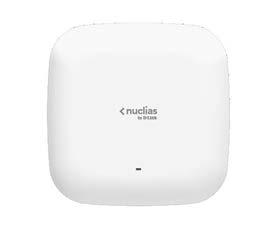
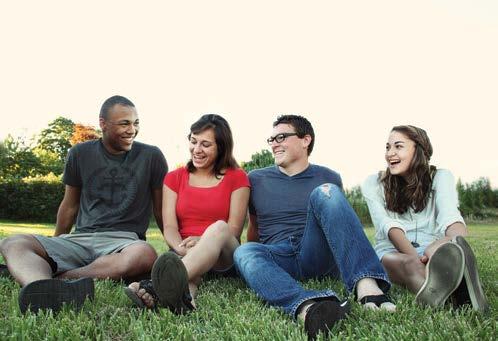
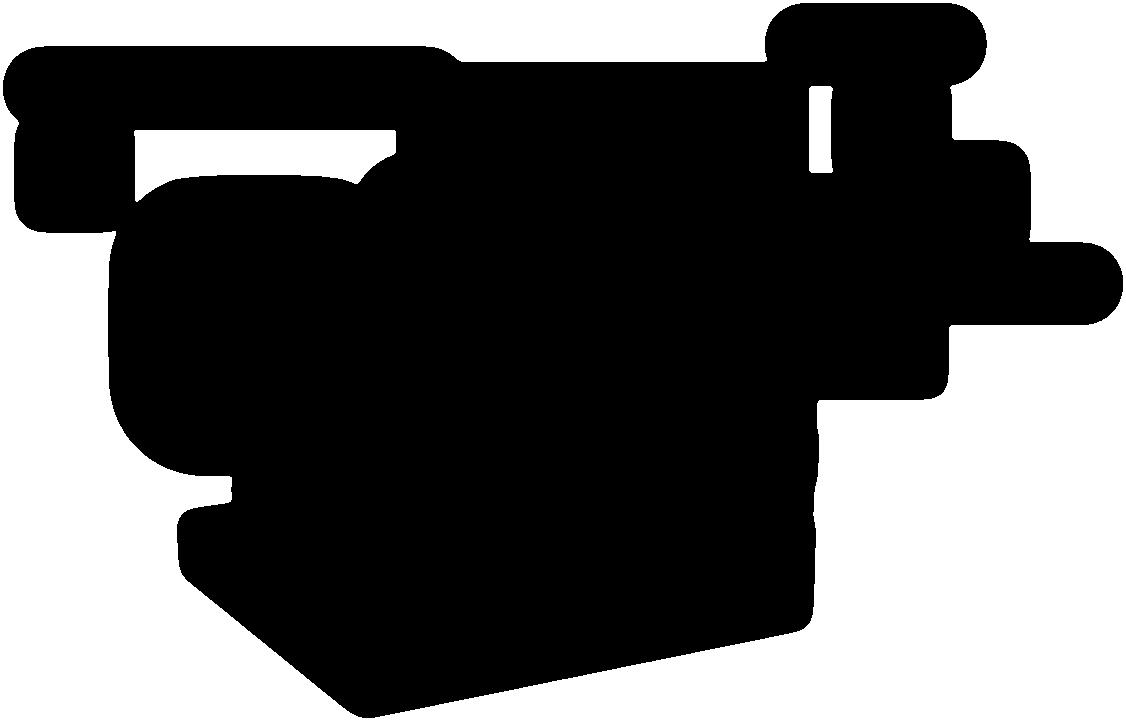
























10
DUBAI'S UNIVERSAL BLUEPRINT FOR AI WILL PROPEL THE CITY TO NEW HEIGHTS IN TERMS OF INNOVATION - AND THE GOVERNMENT SECTOR WILL BE CRITICAL TO ITS SUCCESS. LENOVO FIELD CTO LEXAR GENERAL MANAGER SENTINELONE REGIONAL SALES DIRECTOR

CNME rounds up the biggest regional and global developments in enterprise technology, which includes the news that Cloudfare has expanded its services across the KSA, Sophos uncovers a Chinese espionage campaign in Southeast Asia - and data streaming accelerates AI development and reduces costs according to a new report conducted by Confluent.
Dominic De Sousa (1959-2015)
Syed kausar.syed@cpimediagroup.com







18
38
Ashley Woodbridge, Field CTO, Infrastructure Solutions Group at Lenovo, outlines the unique capabilities presented by RAG (Retrieval Augmented Generation) for enterprises.
Meriam El Ouazzani, Regional Sales Director, Middle East, Turkey & Africa at SentinelOne, discusses their new 'Purple AI' offering within its Singularity Platform.
Vibhu Kapoor, Regional Vice President Middle East, Africa & India at Epicor, provides our readers with a broad overview on the rapid changes occurring within the manufacturing ecosystem in the KSA.
42
Oliver Ledgard, EMEA Government and Aviation Director at Zebra Technologies, highlights the need for nations to migrate their TETRA services to broadband in an effort to enhance its critical communications.
46
Wael Handous, CEO of MEA Tec Distribution, explains how its new distribution agreement with QriarLabs is 'groundbreaking' for the Middle East region.




New Confluent Global Report finds data streaming accelerates AI development and cuts costs
Confluent, Inc., the data streaming pioneer, unveiled its 2024 Data Streaming Report: Breaking Down the Barriers to Business Agility & Innovation.
The report dives into how organisations use data streaming to innovate, accelerate AI adoption, improve business agility, power customer experiences, and overcome data accessibility and management challenges. Based on a survey of 4,110 IT leaders across 12 countries, including the UAE, the report shows the pivotal role data streaming plays in helping businesses maximize the full potential of their data.
“Many organisations have data siloed away in different systems and applications, making it impossible to find and benefit from one of their most critical business assets - their data”, said Shaun Clowes, Chief Product Officer at Confluent. “Data streaming acts as the central nervous system for businesses by connecting systems and applications so real-time data can be easily accessed for decision making and improving business processes and customer experiences”.

Ransomware continues to cause mayhem as victims are unable to recover 43% of affected data
Ransomware remains an ongoing threat for organisations and is the largest single cause of IT outages and downtime as 41% of data is compromised during a cyberattack, according to the latest Veeam® 2024 Ransomware Trends Report.

The report reveals that only 57% of the compromised data will be recovered, leaving organisations vulnerable to substantial data loss and negative business impact as a result.
“Ransomware is endemic, impacting 3 out of 4 organisations in 2023. AI is now enabling the creation of smarter, more advanced security, but it’s also
facilitating growth in the volume of sophistication of attacks", said Dave Russell, Senior Vice President, Head of Strategy at Veeam. "Our report delivers a clear message: ransomware attacks will continue, be more severe than predicted, and the overall impact will cost organisations more than they expect. Organisations must take action to ensure cyber resiliency and acknowledge that rapid, clean recovery matters most. By aligning teams and bolstering cybersecurity with immutable backups, they can protect their valuable business data while Veeam keeps their business running and secure”.
When Cloudflare launched Regional Services in June of 2020, the concept of data locality and data sovereignty were very much rooted in European regulations.
Bashar Bashaireh, Managing Director of Middle East & Türkiye at Cloudflare explains, “Fast forward to today, and the pressure to localise data persists: Several countries have laws requiring data localisation in some form, publicsector contracting requirements in many countries require their vendors to restrict the location of data processing, and some customers are reacting to geopolitical developments by seeking to exclude data processing from certain jurisdictions. That’s

why Cloudflare is excited today to announce the first step in a longer journey to help customers meet their specific requirements for being able to control where their traffic is handled by expanding the vendor’s existing ecosystem with nineteen new regions including the Kingdom of Saudi Arabia”.
The new regions Cloudflare is launching include: Austria, Brazil, Cloudflare Green Energy, Exclusive of Hong Kong and Macau, Exclusive of Russia and Belarus, France, Hong Kong, Italy, NATO, Netherlands, Russia, Saudi Arabia, South Africa, Spain, Switzerland, Taiwan, US State of California, US State of Florida, US State of Texas.
Sophos, a global leader of innovative security solutions for defeating cyberattacks, recently released its report, “Operation Crimson Palace: Threat Hunting Unveils Multiple Clusters of Chinese State-Sponsored Activity Targeting Southeast Asia,” which details a highly sophisticated, nearly two-year long espionage campaign against a high-level government target.
During Sophos X-Ops' investigation, which began in 2023, the managed detection and response (MDR) team found three distinct clusters of activity targeting the same organisation, two of which included tactics, techniques and procedures (TTPs) that overlap
with well-known, Chinese nationstate groups: BackdoorDiplomacy, APT15 and the APT41 subgroup Earth Longzhi.
The attackers designed their operation to gather reconnaissance on specific users as well as sensitive political, economic, and military information, using a wide variety of malware and tools throughout the campaign that Sophos has since dubbed “Crimson Palace.” This includes previously unseen malware: a persistence tool that Sophos named PocoProxy.
“As Western governments elevate awareness about cyberthreats from China, the overlap Sophos has

Paul Jaramillo, Director, Threat Hunting and Threat Intelligence, Sophos.
uncovered is an important reminder that focusing too much on any single Chinese attribution may put organisations at risk of missing trends about how these groups coordinate their operations”, said Paul Jaramillo, Director, Threat Hunting and Threat Intelligence, Sophos. “By having the bigger, broader picture, organisations can be smarter about their defences”.

Dell Technologies and Aramco have signed a Memorandum of Understanding (MoU) to explore opportunities in quantum computing, artificial intelligence (AI), edge computing solutions, and advanced computing architectures.
The role of technologies such as AIenabled edge and quantum computing
can help address complex problems in areas such as energy optimisation, predictive maintenance, weather modelling, and materials science. The combination of AI and edge computing, along with a robust and scalable enterprise IT infrastructure, is expected to allow businesses to optimise operations, foster real-time data
processing, and enhance computational efficiencies.
Nabil Al Nuaim, Senior Vice President of Digital & Information Technology, Aramco, said: “Technologies such as AI and quantum computing offer unparalleled processing capabilities and could be gamechangers in the energy sector. The potential is limitless, and we are excited to explore new opportunities with Dell. These opportunities could enable us to further align with our sustainability goals and help contribute to the Kingdom's position as a technological frontrunner in the energy domain".
Mohammed Amin, Senior Vice President, CEEMETA, Dell Technologies, said:
"From optimising energy operations to finding solutions to complex challenges, we seek to drive transformative change within the energy vertical by helping companies like Aramco adopt the latest technological advancements to stay ahead of the innovation curve”.
Epicor, a global leader of industryspecific enterprise software to promote business growth, has announced at Epicor Insights Europe 2024 its collaboration with Climatiq Technologies GmbH to introduce advanced carbon intelligence calculations and reporting into Epicor’s suite of Sustainability Management solutions.

Through this alliance, Epicor will introduce carbon calculations into its industryfocused ERP platforms, enabling customers to access accurate, real-time carbon calculations, track emissions, and identify key opportunities to reduce their carbon footprint.
“We’re excited to work with Climatiq to assist our customers in reaching their sustainability goals, and boosting profitability while reducing emissions,” said Kerrie Jordan, Group Vice President of Product Management at Epicor. “I’m incredibly proud of our team’s achievements in making this vision a reality.”
Sustainability, defined as using resources more slowly than they’re replaced, is now crucial for competitiveness—not just in response to regulatory requirements but as a long-term business strategy to optimize supply chain processes and drive efficiencies. The integration of Climatiq’s carbon footprint calculation API across the Epicor portfolio will help businesses work toward sustainability goals without compromising profitability.
Epicor plans to roll out these features in the coming month, with full implementation expected in 2025.

AHAD, a leading cybersecurity, digital transformation, and risk management company has announced the expansion of its services with the launch of proactive, prevention-first approach to Managed Detection & Response (MDR).
This service is designed for clients seeking alternatives to traditional Security Operations Centres (SOC) and introduces next-gen Managed Security Service Provider (MSSP) services, specifically tailored for the Middle East, Turkey, and Africa (META) region. This crucial extension marks AHAD’s strategic move to fortify its cybersecurity presence in the META region, offering cutting-edge solutions to meet the evolving needs of businesses in the area.
“At AHAD, we're not just committed to protecting our customers; we're revolutionising the way cybersecurity is delivered. Our Prevention-First
Managed Detection & Response provide superior 24/7 Prevention, Detection & Response ensuring robust defence. Our mission is to empower businesses to thrive in the digital era with confidence; knowing that they are protected by the best in the field”, stated Muneeb Anjum, CEO of AHAD.
“We are thrilled to unveil our new Managed Detection and Response (MDR) and Managed Prevention and Response (MPR) services as part of our MSSP offerings in the META region", announced Rohan Daniel Nair, COO of AHAD. "AHAD's MSSP services are meticulously crafted to empower businesses within the META region to adeptly navigate their security operations. By integrating the robust capabilities of MDR with proactive threat hunting, we provide extensive security coverage, elevate threat detection capabilities, and accelerate incident response times. This ensures that organisations are well-prepared to defend against advanced cyber threats", he concluded.
We are thrilled to unveil our new Managed Detection and Response (MDR) and Managed Prevention and Response (MPR) services as part of our MSSP offerings in the META region. ”
IFS, the leading technology innovator in cloud and Industrial AI software, recently announced it has entered into a definitive agreement to buy Copperleaf Technologies Inc.
As the most advanced provider of AIpowered enterprise Asset Investment Planning and Management (“AIPM”) software, Copperleaf offers compelling capabilities that add further depth to IFS’s position as the foremost global Enterprise Application Software provider for Asset and Service centric industries.
The combination of Copperleaf and IFS is highly complementary, offering organisations an unparalleled breadth and depth of software capabilities.
Customers will have access to advanced Industrial AI-powered software to manage every element of the assets that are so crucial to their business –

across their lifecycle – in order to drive efficiency and effectiveness in their operations.
Over two trillion dollars of physical and digital assets around the world are managed using Copperleaf software, which provides data and insights to help customers optimise decisions on where and when to invest in their business.
Mark Moffat, CEO of IFS, commented: “IFS continues to build on its position as the global software leader for Asset and Service management, powered by Industrial AI. I am deeply excited about what Copperleaf brings to our extended customer offering. We combine two companies built on the same principles: world class innovative technology with unrivalled time to value, asset and industry expertise delivering exceptional ROI, and organisational cultures that have always put the customer at the centre of everything they do”.
Westcon-Comstor, a global technology provider and specialist distributor, recently announced it has joined forces with Extreme Networks to help transform spectators’ sports and event experiences by driving adoption of Extreme solutions across stadiums and venues throughout Europe, the Middle East and Africa (EMEA).
Westcon-Comstor is now the first distributor in the EMEA region to be officially recognised as a delivery and solutions partner for stadiums looking to leverage Extreme’s market-leading solutions, which have already been deployed by world-famous football clubs including Manchester United and Borussia Dortmund as well as US-based sporting bodies such as Major League Baseball, NASCAR and the National Football League (NFL).
High-speed Wi-Fi connectivity and Wi-Fi analytics enable seamless experiences including mobile ticketing,

cashless transactions, in-seat concessions ordering, real-time sports betting, and improved stadium app performance, driving fan engagement while boosting revenue generation for venues. Strong network infrastructures improve ticketing, security, and staff collaboration and provide data-driven insights for better resource allocation and operational planning.
Westcon-Comstor and Extreme Networks have a long-standing relationship, and the new agreement sees Westcon bring Extreme’s solutions to the IT channel in EMEA for the first time.
“Extreme Networks is an innovator in the space – shaking up the status quo and helping customers find new ways to drive better outcomes. They’ve taken a leadership position in driving seamless deployments across large venues and stadiums, and we’re excited to partner with them as they continue to expand their presence across EMEA”, said Martin Flensburg, VP, Business Operations, Global Supply Chain Solutions and Services at Westcon-Comstor. “This new element in our relationship with Extreme creates exciting new opportunities for our partners and adds to our long-held collaboration, enabling the delivery of projects across Extreme's networking solutions, supported by Westcon services”.
CNME Editor Mark Forker spoke to Ashley Woodbridge, Field CTO, Infrastructure Solutions Group, Middle East, Turkey and Africa, at Lenovo, in a bid to better understand how Retrieval Augmented Generation is empowering businesses with access to better data and is bringing large public LLMs safely into the enterprise space.
Ashley Woodbridge has enjoyed a phenomenal career in ICT.
A career that has spanned almost 25 years, and one which has seen him work for technology behemoths such as Cisco, Google, SAP, Amazon Web Services and now Lenovo.
A quick scan through the recommendations tab on his LinkedIn profile clearly indicated the high regard and esteem he is held in by his peers.
Described as a world-class manager and an innovative leader, Woodbridge was appointed as Lenovo’s Field CTO, Infrastructure Solutions Group, Middle East, Turkey and Africa in October 2022.
Woodbridge has been in the Middle East region since 2007, and during that time has seen vast technological changes across the industry.
The topic of AI remains at the forefront for more organisations across the global IT ecosystem, and the latest concept to emerge within the field of AI is Retrieval Augmented Generation (RAG).

Woodbridge is someone that has always possesses the ability to have an indepth understanding and knowledge of all the new tech innovations and trends that drive change.
So, there is arguably nobody better to talk about Retrieval Augmented Generation than the charismatic Australian ICT.
Woodbridge kickstarted our conversation on RAG by providing more context on the LLM landscape overall.
“To put it into context,
one of the things about Large Language Models (LLM) is the fact that we’ve cracked the code essentially on the compression method. Its knowledge comes from processing all of the data from across the entire internet, which contains trillions and trillions of data sources, and that provides us with access to amazing intelligence that also enables us to retrieve facts. However, the real issue comes from the fact that the knowledge is only updated from when they did the training run. For example, when you go on ChatGPT, you’ll see a little prompt in the corner that will say this data is valid from October 2023, so that’s inevitably led to a huge problem as we want to push this into the enterprise, or for start-ups looking to differentiate their services,” said Woodbridge.
As Woodbridge highlighted, one of the biggest areas to differentiate is to get access to real-time knowledge, and a lot of that knowledge is not in the public domain.

“The LLM has done a great job of trolling applications like Reddit and Facebook, but when it comes to medical journals, or financial reporting a lot of this material is behind paywalls, so that information couldn’t go into that training set. In order to find a way around this, the smart boffins came up with the concept of retrieval augmented generation. What that essentially means is that you add a step before you hand it to the LLM, and augment it to get more pertinent information, and that is spread out in several different ways. The initial thought process was let’s have a database that has my information in it, information that wasn’t previously readily available, and was behind a paywall and get more up to date information, you check in that database and then
the information from that database goes into the more traditional Large Language Models, and this has had a number of benefits,” said Woodbridge.
According to Woodbridge, one of the first things you can do is make something like ChatGPT much smarter.
“People are using it for its ability to converse in English and write very creative long-winded responses, but you can now feed it with your own private data that it previously wasn’t able to learn on, and now you’re getting much better responses. It has made the information faster, but it has also significantly helped to
stop hallucinations, because you’re now in a position to give it pointed information. For example, if a user went and said is the SR 685 the best platform in the world, the 685 is a platform that wasn’t released when ChatGPT was trained, so it would come up with this absolute fantasy response claiming that it’s the best platform that Lenovo has ever had. However, that only serves to cause issues with our brand because you’re talking about our product that isn’t released. Now by wrapping that in a RAG where we are able to provide all of our datasheets and support documents then it’s now going to give you
You’re now able to get all the benefits of a RAG using a real-time API that can now overcome the complexity of having a two-step model.”
the correct answer. So, for a lot of enterprises, a cheap hack has been the ability to use one of these, let’s call it a freely available public Large Language Model and wrap some guidelines around it through the use of RAG to give you much more responsive answers. It really has been a great hack to bring the public models safely into the enterprise space,” said Woodbridge.
In terms of the limitations and challenges presented by RAG, Woodbridge highlighted that the two-step model in the initial RAGS lacked enough due diligence.
“The initial rags were basically a two-step model, so you used an intermediate AI model that was very good at what we call vectorising. If you had a large amount of data then you would feed it to the pre-step model, who would subsequently turn all of that data into a matrix of numbers. This essentially meant that when the first question was submitted it would go and look it up by leveraging smart maths, and would find what documents were relative because they score a very similar weighting in terms of when you turn them into a vector. However, the issue that we sensed is that initial step when done well gives amazing results. However, what we found was that there wasn’t enough due diligence done on those initial steps, so if that initial step provides garbage data, then now you’ve just taught the large language model that the augmented step is the source
of truth, but it actually makes the hallucinations even worse if there’s bad data in it,” said Woodbridge.
Woodbridge said one of the other benefits of the increased adoption of RAG has its extension beyond vectorising.
“The good thing that has happened is that the concept of RAG has been extended beyond just this vector database, you can see this in terms of what ChatGPT have done with their private GPTs, where we can all make our own customised GPTs, which they call GPTs, but they are essentially RAGS. It is their interpretation of RAGS, but we’re seeing the trend now to not necessarily use a data source, but instead integrate it into that retrieval set in order to get access to an API. You don’t need that vectorisation step, and you’re now not risking that the source data could be inaccurate, or stale. You’re now able to get all the benefits of a RAG using a real-time API that can now overcome the complexity of having a two-step model,” said Woodbridge.
In terms of the mechanics behind all of this, Woodbridge explained the importance of the system prompt.
“How we share the information when using RAGS is called padding, or embedding the system
prompt. So, in terms of the API you basically dump all of the context into the system prompt. The user doesn’t see it, but when the user asks a question it’s able to use the system prompt to be able to provide much better context. Now the big limitation here is a lot of the large language models have very small system prompts, and it’s not that long ago that the maximum number of tokens you could give to Open AI was 8K. So, essentially what that meant was all of that knowledge you had to share had to fit in roughly 8,000 words. As you can imagine that’s still not giving enough data for a lot of use cases that need that true intelligence and real-time availability, which is what we are all striving for,” said Woodbridge. Woodbridge pointed out that this is the primary factor behind an increase in announcements being made by big technology companies.
“We’ve seen the likes of Google in relation to Gemini, who are now trying to do a million token input sizes, and we’ve also seen a lot of the most cutting-edge public LLMs are targeting aving unlimited context size because they now recognise and understand that there has been this move to RAGS. We’ve now reached this
We’ve now reached this stage where everyone is hoping for bigger context sizes, but bigger context sizes are not cheap, so that has now led to a bit of a war between how we can do cost-effective AI.”
stage where everyone is hoping for bigger context sizes, but bigger context sizes are not cheap, so that has now led to a bit of a war between how we can do cost-effective AI, and how we can achieve the ultimate goal of masking this as close as possible to AGI,” said Woodbridge.
Woodbridge also revealed that Lenovo is working more with B2B customers when it comes to LLMs.
“The perceived intelligence goes up with the number of parameters that you can input into the model. The benchmark at the moment is 70 billion and above in terms of parameters and that is where you start to get comparative answers to whatever the cutting-edge public model is, whether it is Gemini, or ChatGPT. At Lenovo, we’re working a lot with enterprises, not so much in the B2C space, but instead B2B. You’re now able to get ChatGPT 3.5, or ChatGPT 4 like answers from a 70 billion parameter model because you’re now able to give more context that only would be achievable if you did it without a RAG by having a 150, or 200 billion model. What that actually translates to is something like Llama 3, which is very popular in the enterprise space, and that can be done on a single server in a very cost effective way. You can now deliver to the enterprise answers that are relevant to their customer base and relevant to their internal use case from a single server – and the end-user
would not be differentiate from the quality of the response that they would get from the largest public LLM,” said Woodbridge.
Woodbridge added that enterprises were now getting the best of ‘both world’s’.
“Many enterprises have adopted a wait and see response, and as a result have not been able to leverage all the benefits of LLMs. However, with the advent of RAGS and the Open-Source community providing great models like Llama 3 and the Falcon 70B, which is big in this region because of its Arabic capabilities. Enterprises are getting the best of both worlds, which is high-quality responses that show they are not lagging the latest technology, and have the control, security and governance that they both need and want before they launch a service,” said Woodbridge.
In terms of some ethical concerns around RAGS, Woodbridge said it wasn’t a silver bullet, but said it definitely was helping in terms of eliminating some biases that exist.
“It’s not a silver bullet, but it certainly is helping to debias things because again, rightly, or wrongly when most of the training data for these very successful public models is freely available, and open on the internet. However, that doesn’t always necessarily mean it is always is representative of the community and social values. What the large public LLMs have done is put a lot
of alignment in terms of safeguards, and safeguards have been in place for some of the bad things that may have been learned. For example, if you ask it to write a paragraph of code then it will give you 7 paragraphs of all of the ethical considerations, and outline all the reasons why you need to be careful of copyright before it actually writes the three lines of code. So, on one side of things they are solving the alignment problem, but they’re solving it with a sledgehammer,” said Woodbridge.
Woodbridge concluded a wonderful discussion by reemphasizing the benefits of RAG.
“What RAG is able to do is give enterprises the ability to provide augmented data, which aligns with their values and mission statement. RAG is helping from the point that it can never untrain the models for the things it learned, but it helps you to be able to build a better alignment based off more up-to-date information and that is aligned with your social causes. It is also allowing you to use smaller models that are more energy efficient and sustainable, and don’t have the same dependency on training themselves on all of the internet. What you’re seeing now is enterprises that have the means, capital and skills to build a 7 billion parameter model that is only trained off their choice of data, and then they are able to augment that further with RAG,” said Woodbridge.
CNME Editor Mark Forker managed to secure an exclusive interview with Aadesh Gawde, Chief Innovation Officer, at OPTIMAS, to find out more about the significance of their new strategic alliance with UiPath and Vistas Global – and how he plans to transform traditional organizational risk management.
In the current digital landscape, mitigating risks when it comes to security and being compliant in terms of the regulations and rules around data, and the application of AI technologies can be complex to say the least.
The speed at which technology is evolving means businesses to be agile and adaptive if they both want to stay relevant to their customers, and not fall foul of a cybersecurity attack.
During GISEC, CNME was afforded the opportunity to speak to Aadesh Gawde, the dynamic and entrepreneurial force behind OPTIMAS.
OPTIMAS, are specialists in AI-driven cybersecurity solutions, and are focused on delivering futuristic cognitive risk management solutions that utilise their (BTER) Business Technology Exposure and Resilience framework.
Gawde is the Chief Innovation Officer at

OPTIMAS, but has enjoyed a distinguished career in technology.
He spent 8 years at EY, and founded Espina Digital Consulting, whilst he is also
Our goal is to transform traditional organizational risk management.”
a member of the Forbes Technology Council.
During GISEC 2024, Gawde spoke to CNME Editor Mark in the immediate aftermath of their announcement of a strategic alliance with UiPath and Vistas Global.
He explained the business model of OPTIMAS and what they are trying to achieve within the IT ecosystem.
“Traditionally, risk and compliance was a process that was managed by a plethora of different people, such as consultants, chief risk officers and other IT security personnel. However, in today’s complex digital world that has so many moving parts, it’s just not humanly possible to be on top of it. What we are trying to do is essentially to connect all the dots, so our platform can autonomously sense, detect, predict, contextualise, respond, recover, govern, manage and communicate in a seamless manner around the clock,” said Gawde.
Gawde explained the role UiPath will play from an RPA perspective in terms of enhancing the services that they provide.
“In the past organisations were compromised based on 10 or 12 points, which were insecure configuration systems, such as access control, insecure traffic, design weaknesses, human weaknesses, so what OPTIMAS.AI has done with our platform is give businesses the ability to continuously and autonomously detect,

predict and contextualise. At this inflexion point is where the RPA kicks-in, and that’s where a company like UiPath enters the fold. The RPA can prevent, detect and respond, and our system governs all of this and communicates this information to the relevant business leaders in a non-technical way. The business leaders need to know am I losing money, am I losing customers, is my license becoming impacted, is my reputation at risk, and ultimately is my business at risk,” said Gawde.
Gawde explained the concept behind their BTER framework and said it was ultimately designed to promote and encourage cyber responsibility.
“We have a framework called BETR, it stands for Business Technology Exposure and Resilience. BETR is a body of knowledge for business and IT leaders. We have recently created
a non-profit organisation that will be out in the marketplace soon. We are inviting business leaders and professionals to join this
community in a bid to create more awareness about BETR and improve our knowledge sharing capabilities within the organisation. As I said,

What we are trying to do is essentially to connect all the dots, so our platform can autonomously sense, detect, predict, contextualise, respond, recover, govern, manage and communicate in a seamless manner around the clock."


BETR will be a non-profit organisation that had been designed to promote the concept of cyber responsibility,” said Gawde.
In terms of challenges, Gawde said that he sees a commonality in terms of the problems facing many enterprises, but did qualify this by saying he also sees a lot of challenges that are industry-specific.
“Undoubtedly, there is a commonality of challenges when it comes to IT across the board. However, there are niche challenges that are industry-specific. For example, when it comes to energy, utilities and power grids it is critical infrastructure, so there’s health and safety involved because lives are at stake. If you take the telecommunications sector, then the issues are centred around data and customer privacy. A insecure configuration in an Oil and Gas environment could lead to a fatal accident, whereas an insecure configuration in a bank could lead to a data leak, but the impacts are very different,” said Gawde.
When asked about the importance of their new strategic alliance with UiPath and Vistas Global, Gawde said they wanted to ‘transform’ organizational risk management.
“Our goal is to transform
traditional organizational risk management. Together, we are dedicated to ensuring customer success and executing outcomebased transformation programs that navigate the complexities of modern risk management— including the advent of AI, IoT, and 5G—providing dynamic and effective solutions tailored for our clients,” said Gawde.
According to the MoU, OPTIMAS remains at the core of this alliance, leveraging the BTER™ framework for risk quantification, validation, and comprehensive enterprise context management. This allows for a transformation of traditional risk management into a proactive, cognitive methodology.
Gawde added, “UiPath will play a crucial role in this alliance, escalating the capabilities with intelligent automation and orchestration, a significant addition to our strategic approach. Vistas Global introduces an innovative outcome-based customer engagement models, enhancing the adoption and effectiveness of the BTER framework,” said Gawde.
UiPath will play a crucial role in this alliance, escalating the capabilities with intelligent automation and orchestration, a significant addition to our strategic approach."
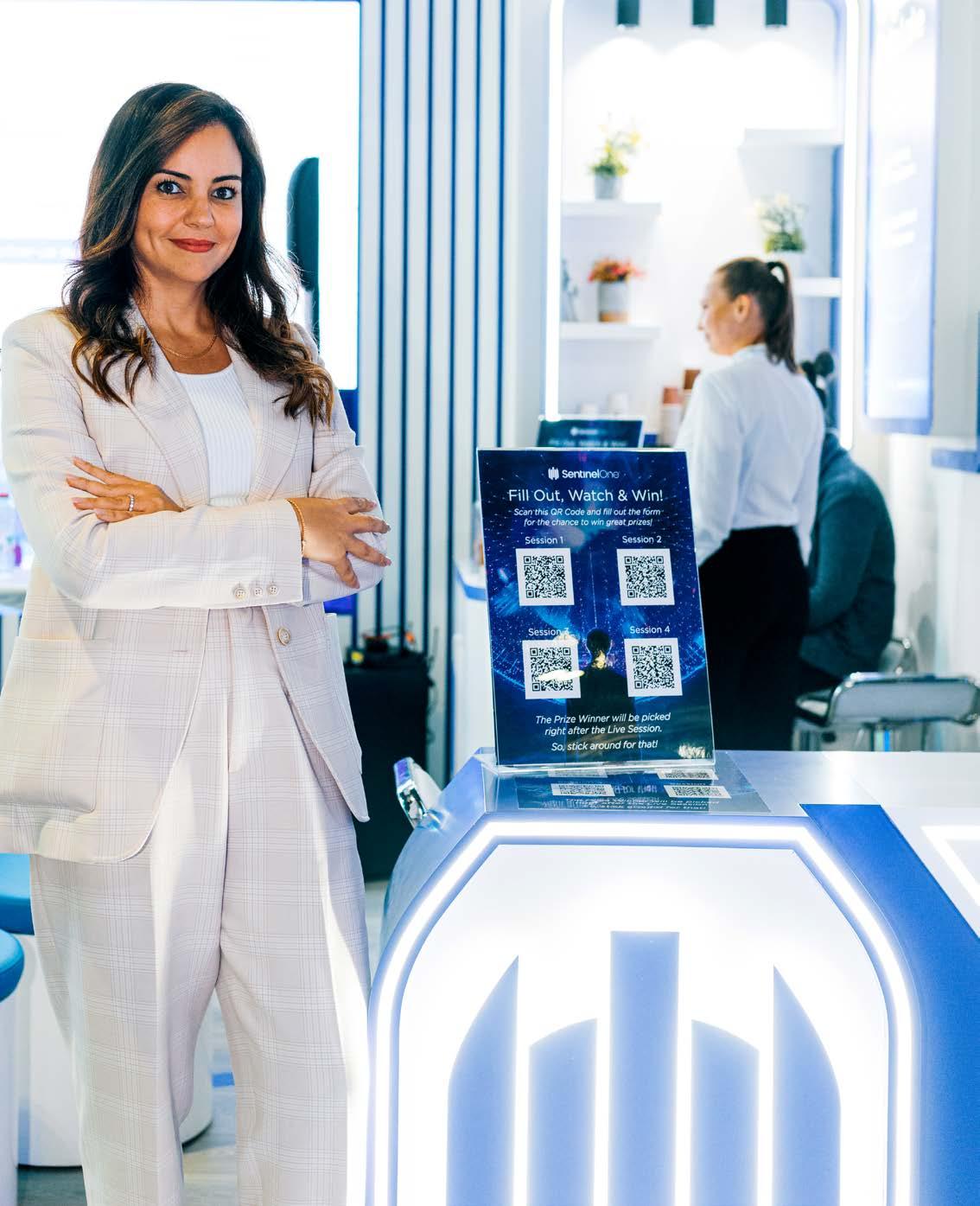
CNME Editor Mark Forker secured an exclusive interview with Meriam El Ouazzani, Regional Sales Director, Middle East, Turkey & Africa at SentinelOne, in an effort learn about the unique capabilities of its singularity platform, the impact the integration of Purple AI will have for its customers, the need for businesses to promote a mindset of protect, detect and respond within their organisations –and the need to simplify the use of AI in cybersecurity.
The challenges within the cybersecurity industry are complex and constantly evolving.
Cybersecurity companies need to be innovative, agile and adaptive in order to meet the demands of their customers amidst the backdrop of an increasingly volatile threat landscape.
SentinelOne is a company that over the last number of years has really emerged as a leader in areas like EDR and XDR.
However, at the very heart of the company lies an innovative spirit, one that is driven to develop new products, solutions and services that equip security leaders with the tools they need to fight back.
During GISEC last month, we spoke to Meriam El Ouazzani, Regional Sales Director, Middle East, Turkey & Africa at SentinelOne.
She joined the company from VMware in 2021, and
was appointed as the Regional Channel Manager.
In September 2023, she was promoted to Regional Sales Director, and has been tasked with the responsibility of driving the continued growth of the cybersecurity company across the META region.
El Ouazzani is one of the most respected channel leaders in the IT ecosystem in the region, and has also worked for companies like Cisco and HP in a decorated career to date.
She began our conversation by highlighting that at GISEC, the company was advocating for an ‘enterprise-wide’ security strategy.
“At this year’s GISEC 2024, we are showcasing
our Singularity platform. We’ve been having a lot of conversations over the last few months with our customers in relation to how we can break up the silos of cybersecurity that currently exist, and we are making the case for them to look at an enterprise-wide security strategy. We believe that approach is critical, and we have been demonstrating to them what the SentinelOne platform can do for them, and we’re highlighting the unique capabilities that the platform provides for end-users in terms of empowering them with the platform they need to become more resilient and better protect themselves," said El Ouazzani.
Purple AI allows us to use simple language and we can implement and transform that into complex queries, and that gives businesses the ability to have a much better and more effective security posture.”
Many security analysts believe AI represents a great opportunity for cybersecurity companies to innovative and develop new solutions to get ahead of the curve, but they also acknowledge that hackers are also going to use AI to advance their own aims.
SentinelOne has invested heavily in AI, and its EDR product line is powered by AI.
El Ouazzani said the company would continue to invest in AI, and she highlighted the significance of its recent acquisition of PingSafe to boost their cloud security offering and provide a unified Cloud Security Platform with CNAPP, CSPM, CWPP, and CDR solutions to secure multi-cloud infrastructure.
“Our EDR product is powered by AI, and that has garnered a lot of attention from prospective customers, and it is a big area that we are investing in. We are also looking at identity security, and we have seen huge increase in identity attacks over the last few months. One other key focus area for us is cloud security, and we have recently had a number of exciting acquisitions in that space. In January of this year, we acquired PingSafe and that is really going to add flavour to our cloud security portfolio - and we are always engaging with our customers about the services that we are providing from an MDR to an IR perspective,” said El Ouazzani.
El Ouazzani said that their ultimate goal is to accelerate simplicity for customers
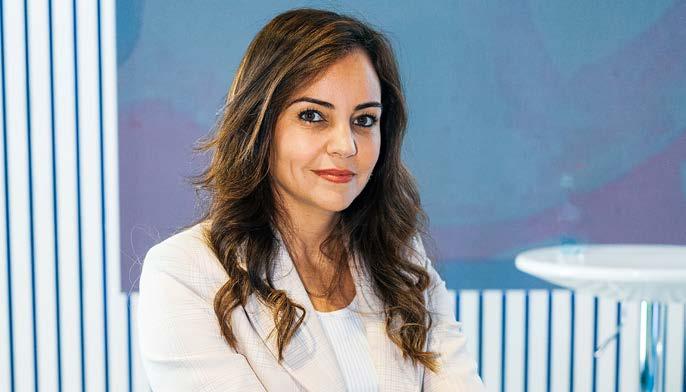
when dealing with security challenges.
“We are providing an end-to-end cybersecurity platform, and we’re no longer looking at solutions sitting inside silos, we’re bringing them all together under the one platform. It is much easier for the customer in terms of automation and management, and it is designed to accelerate simplicity. We’re also talking to our customers about multiple services that we are now able to secure. Our flagship products remain very strong, and we’re seeing that in the continued uptake of our EDR solution, there is an appetite for it within the marketplace. We are also investing in our XDR story, and we just integrated our Purple AI, which is our Gen AI technology, and that allows us to remain relevant to the SOC team. In summary, we’re bringing simplicity, manageability, extra visibility and control – and that’s helping our customers overcome their challenges,” said El Ouazzani.
SentinelOne has also recently launched Purple AI, and it is now officially part of the Singularity platform.
El Ouazzani stated that Purple AI was a hugely significant enhancement to the platform, and said that customers are very excited about.
“Purple AI allows us to use simple language and we can implement and transform that into complex queries, and that gives businesses the ability to have a much better and more effective security posture. Purple AI is also addressing the skills shortage that is impacting so many business leaders from all over the region. Purple AI in many ways is like a form of ChatGPT. It gets a query in natural language and it gets transformed into a complex query. Traditionally, before the advent of AI, and in this case Purple AI, you would’ve required an analyst to do that process. What we are also able to do with Purple AI is to increase collaboration between analysts. It fosters
We are providing an end-to-end cybersecurity platform, and we’re no longer looking at solutions sitting inside silos, we’re bringing them all together under the one platform.”
an environment in which they can work together to examine threats and determine how they can overcome them,” said El Ouazzani.
Generative AI has exploded into the public domain over the last 12 months, and in many has democratised AI for the masses.
However, there remains valid concerns over data privacy.
The other issue is that hackers are already using Gen AI in their new attack methods.
“Hackers are using Gen AI, and let’s be frank about it, they’re not going to stop. Our customers need to harness the capabilities of AI to defend themselves. The question we need to ask is how do we actually take AI and empower our customers with a more effective and efficient way to not only detect and protect themselves from those threats, but to also respond to evolving threat actors, and that’s what the SentinelOne platform does. Data privacy is also a huge concern, and we receive a lot of queries from our customers who want to know if we are going to use their data in our AI engines, and some are reluctant to adopt the technology and integrate it into their systems. However, our AI engines learn from our data, and we would never use the data of our customers,” said El Ouazzani. El Ouazzani stressed that in order to accelerate the adoption of AI businesses need to simplify its use.
“Everybody is talking about AI, but I think where the disconnect comes from is
the fact that no one has been able to show them how to use AI in cybersecurity domain. We’re trying to simplify our AI for our customers in a bid for them to be able to better digest it. The customers that have seen the way we use AI, and have seen first-hand the simplicity of it. The key is to be able to demonstrate how the AI is going to work for them, but the underlying and fundamental component underneath all of this is simplicity, and that’s our approach, but I think other have been guilty of losing sight of this,” said El Ouazzani.
A recent report from Help AG showed that most of the biggest cyberattacks was still human error.
El Ouazzani said that whilst education was important, businesses really needed to promote the mindset of protect, detect and respond.
“There are lot of these issues that quite simply we won’t be able to control all the time. I think educating your employees is important, but that’s going to be a constantly ongoing process, especially when you hire new people, but I do really believe that we have to promote this mentality of protect, detect and respond. When it comes to the protect element you can get all the tools you need, and integrate all the technologies and build a robust strategy to define what it means for everyone inside the organisation, but if there’s no concept of Zero Trust, then there will always be an attack,” said El Ouazzani.
El Ouazzani concluded
a brilliant conversation by highlighting the reality that customers won’t talk about what they don’t yet understand, and the importance of its channel ecosystem to promote their message.
“Customers are not ready to talk about what they don’t understand, they might now understand EDR, so they are ready to talk about that, but once we discuss identity with them a lot of the customers see it as a luxury, which is surprising because if you look at the latest attacks then they are all coming from identity. You do the tooling part to ensure that all your services are secure, but you are still going to have hacks. What happens when you are hit, you need to be able to identify it, and you need experts on the ground that are trained on your technology, and can understand what the threats actors are. We use our channel partners to help elevate our message, and we invest a lot in terms of training our channel to ensure that the customers don’t just get a solution from us, but instead get the service delivered to them in the right through a hands-on and customer centric approach. There is a lot of education still be done, and we will continue to do that, and I actually see it as an opportunity for the customers to get more knowledge from the vendors and that’s our value-add at SentinelOne – and it’s an opportunity for vendors to showcase their latest technologies,” concluded El Ouazzani.
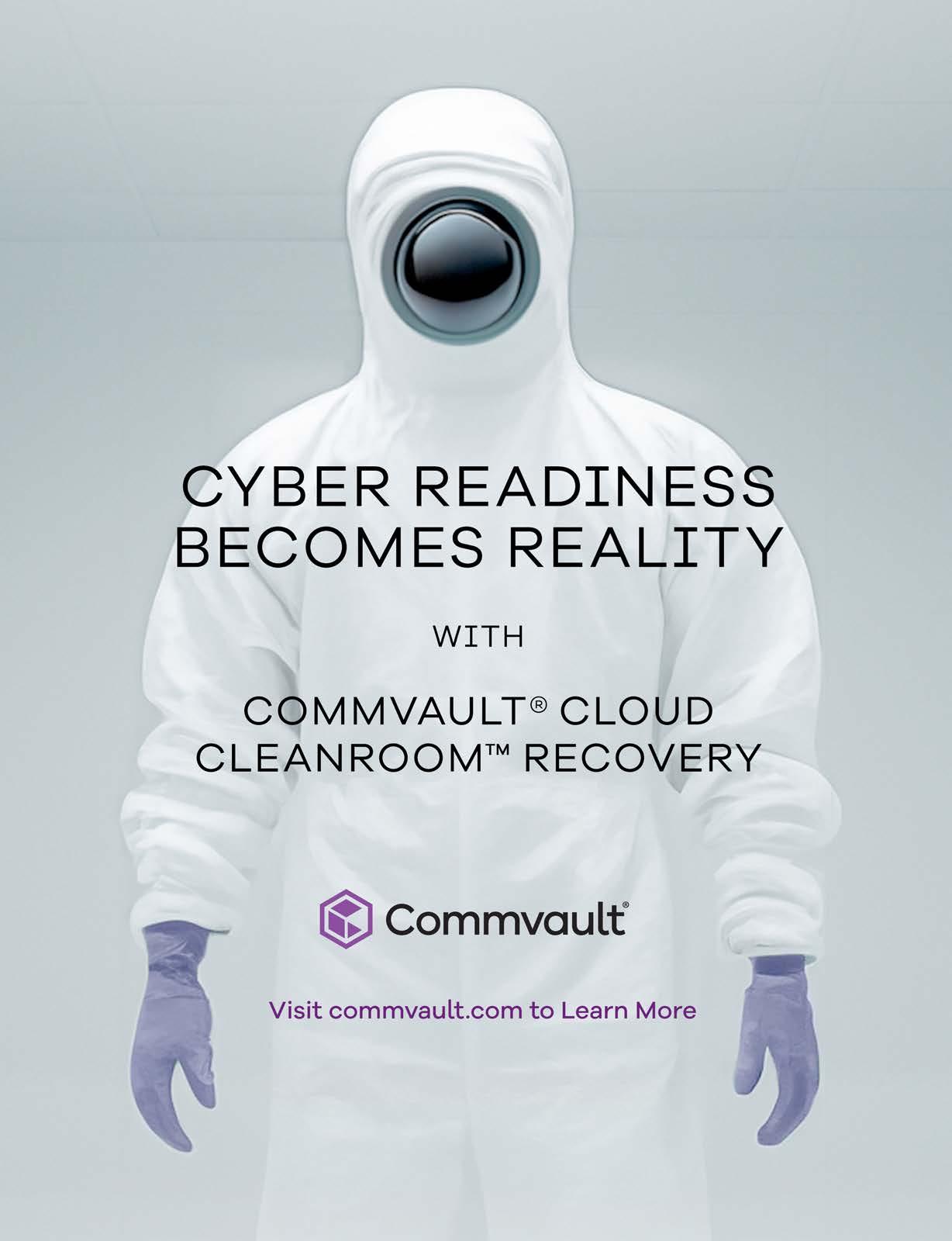
SANS Institute
CNME Editor Mark Forker spoke to Michael Heering, VP of Marketing for EMEA & APAC, at SANS Institute during GISEC 2024. Heering outlined the growth SANS Institute has enjoyed across the Middle East as part of their mission to bridge the skills gap that currently exists across the cybersecurity ecosystem in the region.
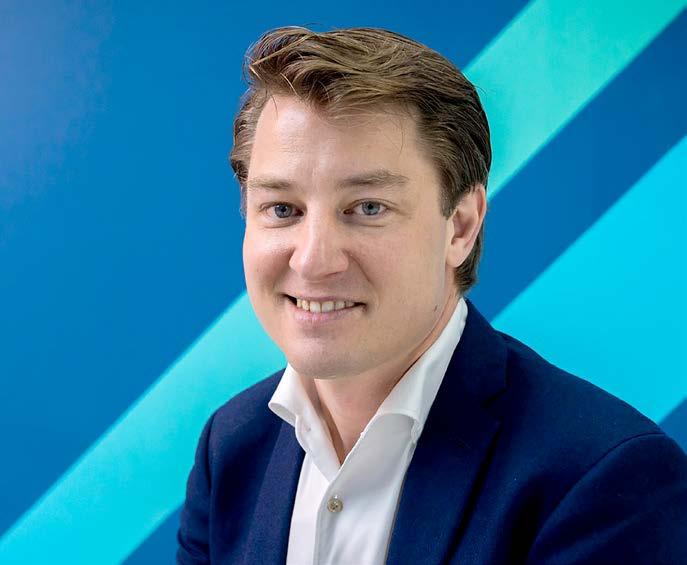
SANS Institute was formed in 1989, as a think tank for thought leadership within the security domain.
Their mission statement remains the same now as it did back in 1989, and that is to empower and equip cybersecurity professionals with the practical skills, knowledge and expertise they need to make our world a safer place.
SANS Institute strives to achieve this through their high quality training, certifications,
scholarship academies, degree programs, cyber ranges, and resources to meet the needs of every cyber professional.
The challenges that currently exist in the cybersecurity landscape have been well documented - and the ramifications for a company hit
by an attack can be devastating, both from a financial and brand perspective.
During GISEC 2024, the world’s leading security vendors were demonstrating the solutions and services they are providing to help businesses fight back against cybercrime.
However, we know that one of the biggest challenges in the cybersecurity industry is the skills gap.
SANS Institute has enjoyed phenomenal growth across the Middle East over the last number of years, and they too were onsite at GISEC showcasing the courses and products they have that can empower security professionals with the tools they need to better protect themselves against constantly evolving threat actors.
At GISEC, CNME Editor Mark Forker caught up with Michael Heering to learn more about SANS Institute.
He said their large presence at this year’s edition of GISEC was actually indicative of the
The AI Security Essentials program is primarily for security leaders, as it gives them a high-level overview in terms of how to deal with it.”
growth they have enjoyed in the region.
“We’ve been participating at GISEC for the last 6-7 years, and we’ve grown a lot across the region during that time. Our growth is reflected in our participation at GISEC, as we’ve gone from having a very small corner booth to what we have here today. We’re also trying to position our instructors more, and we’ve been working closely with DWTC and the cybersecurity council to get more of our SANS Institute instructors in the region to help build the knowledge and share the expertise that we need to really improve the cybersecurity landscape,” said Heering.
At this year’s GISEC, Heering explained how it was the first time they had brought their SANS CISO network event to the Middle East region.
“What is new for us this year is our SANS CISO network session that we are hosting, and that is really tailored and geared towards bringing that cybersecurity community across the UAE together. Essentially, we are showcasing that we provide core training, and we want to show that we really are a training partner fundamentally. We want to have conversations at the highest level, and demonstrate how we can partner with organisations in terms of assessing skills and examining the risks and gaps that they have in order to determine the role we can play in helping to close those gaps,” said Heering.
In terms of really tackling that skills gaps, security analysts have said that it is critical that the next generation

are exposed to the industry during their formative years.
SANS Institute has been praised for its role in attempting to encourage young people to pursue a career in cybersecurity.
“We have very advanced training in the area of penetration testing and forensics, but, last year, we developed a top table exercise for executive leaders which simulates situations that CISOs will encounter in real life like a data breach, and that is a program that we are starting to expand on, and we really want to bring it to the region to bridge the gaps that exist. However, I think if we are
really serious about addressing the skills shortage then it has to start with getting young people within the age bracket of 15-18 to actively want to learn about cybersecurity.
We have a new course called Cybersecurity Foundations, whilst we also have CTFs. In 2015, we partnered with the UAE government on a program called Cyber Quest, that was ultimately designed to enthuse young people to get into cybersecurity and consider a career in that industry. This is the path we have to take to really meet the requirements and demands that we can foresee emerging within this space,” said Heering.
It has been said for years that CISOs have been unable to get a seat at the top table at an executive boardroom level, but Heering believes that due to regulations being implemented across the United States, Europe and the Middle East, that is now changing.
“What we have heard for a long time is that CISOs don’t have that seat at the top table, but I do think that this is starting to change. I think a key driver for that is the change in legislation that we’re seeing on a global level, especially in the United States with the rulings we’ve seen with the SEC, and also more on a federal level. In Europe, we have seen the introduction of the NIS2 directive, so there’s been a sea change across the board. In KSA, they are also looking at new cybersecurity regulations, and that enables CISOs to showcase to the board that they are now being held more accountable, so it’s imperative that they give their CISO the ability to create that environment that gives their organisation a stronger cybersecurity posture,” said Heering.
Generative AI can provide security leaders with response strategies based on successful tactics used in past incidents, which can help speed up incident response workflows.
But again, it comes back to skills, knowledge and expertise, and ultimately being able to harness the capabilities of AI.
Once again SANS Institute is leading the charge in this regard, and has launched a course entitled AI Security Essentials for Business Leaders.
Heering went into more detail about the course, and
the SANS approach to AI learning.
“The AI Security Essentials for Business Leaders course has come about very quickly, and that was primarily born out of a necessity to learn more about how you deal with AI within the cybersecurity domain. In that course, we are attempting to determine what are some of the best practices in our industry when dealing with AI, how do you train your team and your entire organisation on which applications to use, and the importance of being mindful when it comes to how attackers might use AI for their motives? In addition to that course, we are also introducing new modules that cover AI and the different threats and developments it brings with it throughout our entire curriculum. The AI Security Essentials program is primarily for security leaders, as it gives them a high-level overview in terms of how to deal with AI. The other AI modules are incorporated into our other training programs and that provides other practitioners with the knowledge on how to deal with AI, so are trying to cover all levels across the board,” said Heering.
Heering conceded that there are valid concerns with Gen AI when it comes to data privacy, but stressed that people must be allowed to experiment with the technology as long as they
adhere to the guidelines and regulations that have been built around it.
“I think when a new technology arises there are always valid concerns that come with it. The key is to learn about it and determine the best way businesses can incorporate it into their existing systems and applications, but they need to do that by using proper guidelines and best practices. You need to allow for experimentation, and not rush to forbid people from using the technology. If you do that then you create the same problem as shadow IT, where people do it, but they don’t let you know they are doing it. You want people to be transparent about it, and try it out, but again it is critical that when they are doing that, they are operating within the guidelines provided,” said Heering.
Heering concluded a great conversation by declaring that it was the responsibility of SANS Institute and the security industry as a whole to work together to make training and awareness a more common thing.
“There are so many opportunities now for cybersecurity leaders and practitioners to improve and make cybersecurity awareness, and in our case training more common for organisations. The mindset needs to shift, and that’s something we have to continue to strive for and we will,” said Heering.
What we have heard for a long time is that CISOs don’t have that seat at the top table, but I do think that this is starting to change.”

OUR GOVTECH INNOVATION AWARDS 2024 CELEBRATED THE GOVERNMENT LEADERS FROM THE IT ECOSYSTEM, WHO ARE LEVERAGING THE TRANSFORMATIVE CAPABILITIES OF TECHNOLOGY TO PURSUE AND IMPLEMENT INNOVATIVE PROGRAMS THAT ARE ULTIMATELY DESIGNED TO ENHANCE THE LIVES OF THE CITY’S RESIDENTS AND CITIZENS.



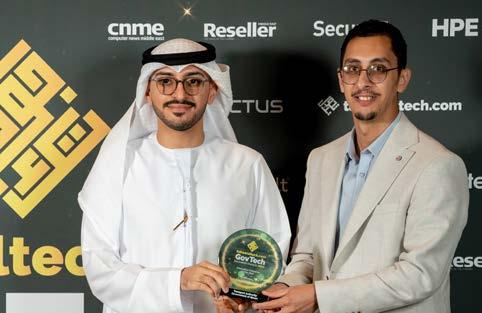


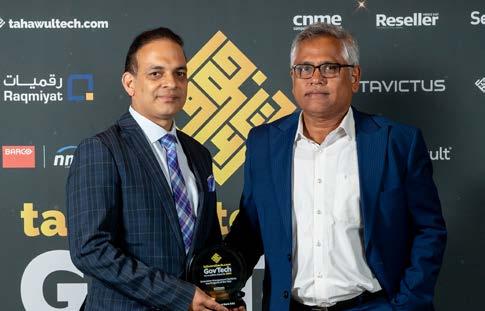




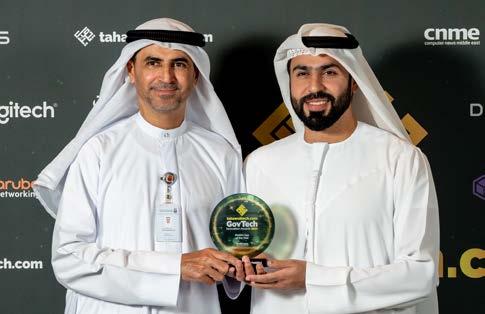


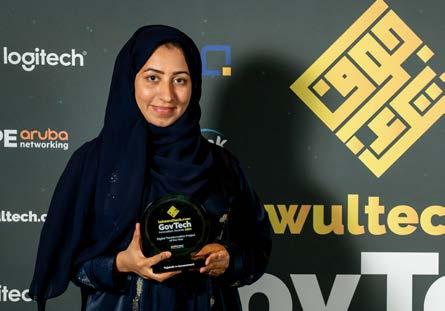



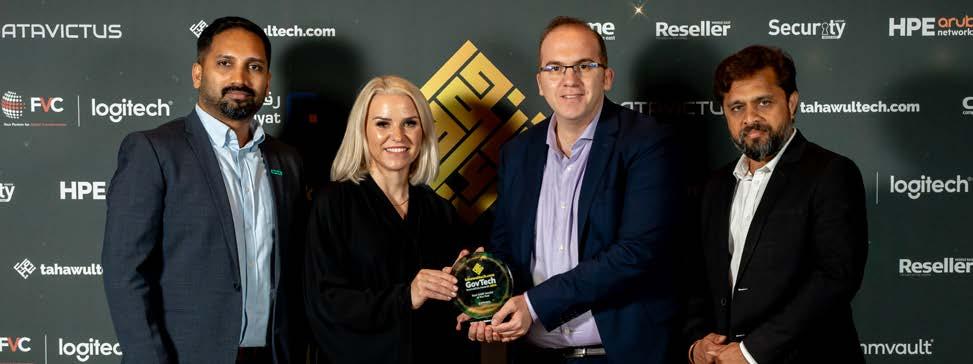




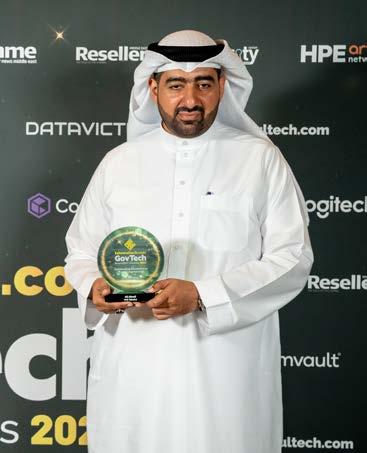

CNME Editor Mark Forker spoke to Fissal Oubida, General Manager - Middle East, Africa and India, at Lexar, in an effort to learn more about the company’s strategic expansion into the African marketplace, the opportunities emerging within the African ICT ecosystem – and how their diverse portfolio of market-leading memory solutions gives Lexar a significant competitive edge over their rivals.

Can you elaborate more in terms of what Lexar is offering to the African marketplace? Lexar is highly focused on strengthening its presence in the continent and building a strong distribution network across Africa.
The recent distributor partnerships we signed in Morocco perfectly aligns with our growth strategy in Africa, and allow our customers greater accessibility to Lexar’s innovative solutions. We are offering our latest
memory products that offer the perfect combination of high speed and massive capacities. Whether it’s to store photos, videos, music or important files and other data, we have products that address all these needs while being compatible with laptops, desktop computers, smartphones or tablets.
During GITEX Africa 2024, which was held last month, we showcased the world’s fastest memory solutions with massive capacities, including the CFexpress Type A card and its latest high-performance gaming DRAM.
We also displayed our blazing-fast gaming DRAM, ARES RGB DDR5, which clocks in at 8400MT/s and with timing as low as CL40.
How important is Africa for your business, and what is the volume of business growth you anticipate in this region over the next few years?
Africa is undoubtedly one of the most important markets for Lexar and we are committed to serving the continent with our latest innovations in memory and storage solutions. We at Lexar believe that Africa is the future – thanks mainly to its young, tech-savvy population who are eager and ready to embrace new technologies across spheres.
Over recent months, we’ve entered into strategic partnerships with key resellers in Africa to ensure that our award-winning products are easily available to consumers in the major markets of Africa.
What are the biggest challenges and opportunities of doing business in Africa?
Africa’s burgeoning economies present exciting opportunities for growth and expansion in a range of sectors.
However, Africa also has its share of challenges – from finding skilled labour, lack of access to consistent electricity, high cost of securing capital to difficult regulatory landscapes and supply chain challenges.
Africa serves as a realm of promising opportunities intermingled with formidable challenges. Businesses that embark on this transformative journey, fortified by strategic insights and a resolute spirit, can carve out success stories, which is precisely what Lexar is focused on achieving.
To what extent can the governments of African countries support and accelerate the continent’s tech industry?
Reports indicate that Africa could secure tech startup funding of more than $90bn by 2030, if policymakers pursue significant reforms to drive growth.
To achieve this goal, governments in Africa need to enable more tech financing, cultivate the business environment and strengthen networks.
Governments should also provide a platform on which investors can access reliable information about tech startups to reduce information asymmetries.
The near absence of credible public databases on African startups increases the costs of transactions and due diligence while reducing investor confidence and diminishing financing inflows to tech innovators.
Several governments in Africa have already taken decisive measures to support and accelerate the tech sector and facilitate intellectual property protections, funding access and other incentives to new businesses.
What industry verticals in Africa are you targeting and why?
Gaming in particular is a segment Lexar is looking to tap into given its immense potential in Morocco and beyond.
Young Moroccan consumers have begun to recognize the importance of reliable hardware that will also allow them to
upgrade as the need arises, and portable data storage products are a vital part of this mix. As an industry, it is therefore equally important that we continue to innovate and address emerging market requirements.
Global funds have invested massively in African startups recently. How do you see the market behaving in the next five years and in which ways that will influence the investments in the region?
In the broad context of global innovation and entrepreneurship, Africa’s startup ecosystem emerged as a beacon of promise and potential. Over the past decade, the African continent witnessed a major surge in entrepreneurial dynamism.
Although there was a slowdown in funding from last year due to various factors, the key for startups in the coming years is resilience. Despite facing adversities, African startups are debunking the myth that growth is the sole metric of success.
They are proving that creativity, community, and strategic decision-making are indispensable elements not only for survival but also for thriving in the face of challenging economic circumstances.
The African Startup Ecosystem is currently in its nascent stages and is still poised to grow significantly in the coming years.
We at Lexar believe that Africa is the future – thanks mainly to its young, tech-savvy population who are eager and ready to embrace new technologies across spheres.”
CNME Editor Mark Forker spoke to Malik Alyousef, Co-founder and Chief Operating Officer at Mozn to learn more about their participation at the recent Dubai FinTech Summit, the challenges facing businesses looking to adopt AI – and the role they play in combating fraud within the financial ecosystem across the UAE.
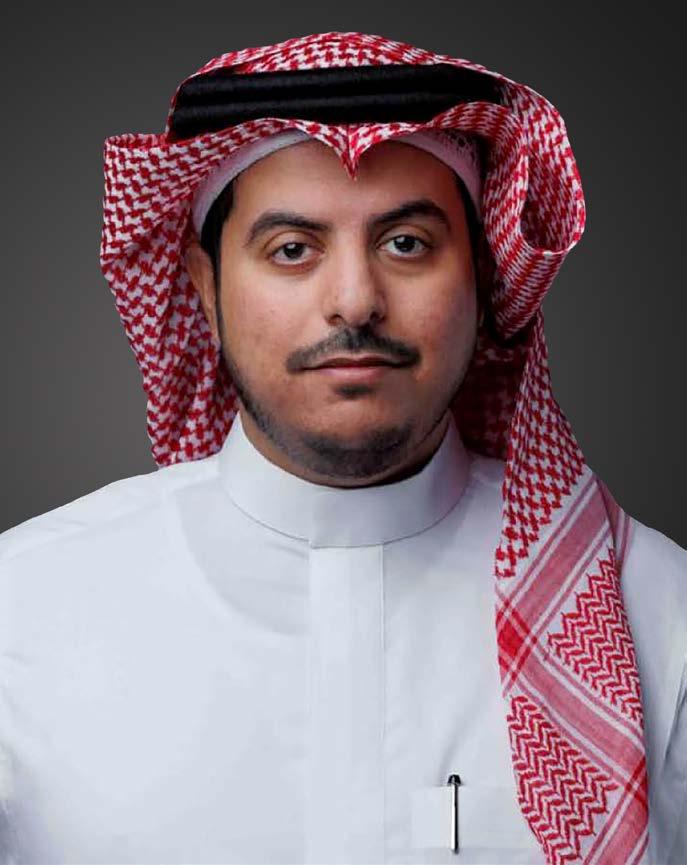
Could you provide details about Mozn's participation in DFS and share insights into what they are showcasing at the Summit?
Our participation at the Dubai Fintech Summit not only allows us to showcase our products, but also provides a significant platform to spread awareness about the transformative potential of AI in the financial sector.
This year at DFS, we are showcasing FOCAL, which is an AI-powered platform that plays a pivotal role in combating fraud and ensuring organizational compliance within the financial industry. By leveraging advanced AI and analytics to detect and mitigate risks in real-time. It's designed to address the complexities of regulatory environments, ensuring that organizations can navigate these challenges seamlessly while maintaining operational efficiency.
Our presence at the Summit underscores our commitment to driving innovation in the finance sector. We believe that solutions like FOCAL are

instrumental in enhancing security, efficiency, and trust within the financial sector.
Our goal is to continue pushing the boundaries of what's possible in the sector, ultimately empowering organizations to thrive in today's digital economy through harnessing the endless powers of AI.
What are some of the challenges facing the adoption of AI in the MENA region?
The barriers facing AI implementation are multifaceted. One critical hurdle is the lack of sufficient awareness regarding AI's potential to revolutionize all industries.
Many organizations are yet to grasp the full scope of AI's capabilities and how it can be tailored to suit their specific needs.
Additionally, another major obstacle is the limited success rate of AI implementation efforts.
The financial commitment needed for effective AI deployment, spanning from acquiring the essential technology and tools to recruiting proficient professionals, can be considerable.
What are some of the factors driving the growth of AI in the MENA region?
A focus on digital transformation across a range of industries is driving the growth of AI in the MENA
region. Many businesses in the region are recognizing the potential of AI to drive efficiency and productivity gains and are investing in developing AI-driven solutions to improve their operations.
Additionally, governments in the region are recognizing the potential of AI to drive economic growth and are investing in developing policies and regulations that support its adoption.
What sets MOZN apart from the rest of the organizations? And tell us more about your efforts in combating fraud. Mozn stands out in the field of AI through an unparalleled blend of innovation, specialization, and a steadfast commitment to advancing digital progress for humanity.
Leveraging cutting-edge AI capabilities, FOCAL delivers precise and adaptable solutions skilled at detecting fraudulent activities and ensuring precise regulatory compliance.
This exemplifies Mozn's expertise in crafting specialized AI tools finely tuned to address the complexities of the financial industry.
Our strategic emphasis on fraud prevention not only underscores our dedication to fortifying security and integrity but also magnifies our impact in shielding businesses against the relentless evolution of threats in today's digital era.
Mozn stands out in the field of AI through an unparalleled blend of innovation, specialization, and a steadfast commitment to advancing digital progress for humanity.”







Rami Mazid, CIO at Nutanix, spoke to CNME Deputy Editor Daniel Shepherd at NEXT 24 in Barcelona, to discuss the importance of efficient, hybrid multi-cloud capabilities and the issue of hyper-specialisation in cloud services.

One of the most common complaints from end-users is that the hyper-specialisation of cloud services is resulting in a runaway complexity that no end-user wants to handle. Is that something that you see being resolved with Nutanix’s services?
Nutanix is completely prepared to resolve such an issue because they are managing everything from one interface now. Team
members no longer need to specialise in individual elements of the cloud.
The team members that I have are the same team members managing on-prem and the cloud, whether it is Google, Azure or AWS.
It’s all about running true hybrid multi-cloud as simply as possible”
Withing our cloud environment we manage 28,000 nodes, 7,500 blocks, 20,500 static VMs and around 50-100 thousand ephemeral VMs which are mainly used for testing purposes.
Why should a prospective customer go to your organisation, which could be considered only cloud-aligned, instead of going straight to Amazon, Google or Microsoft? The number one reason is cost as we discovered when we ran this exercise through our cloud management service.
We realised that, regardless of what cloud provider you go with, if you come to us you end up optimising your environment and your cost will be 45% of what you would normally pay the service providers.
If you run the Nutanix services through the cloud, your overall cost will be reduced due to the efficiency of our wellengineered additional layer. We even compared our power usage against the cloud and found it to be much more efficient in addition to the number of VMs we could fit in it and an overall improved resilience.
When it comes to AI, are you using it internally for automation, or within your DevOps environment?
The first journey we started with AI was related to our internal employees. Once integrated we focused on the top 10 commonly reported cases by our employees, for example people keep asking for additional provisioning and we were able to automate that with AI.

The other area where we implemented AI was within the password reset function allowing our employees to bypass unnecessary admin issues.
Every six months we pick a new top 10 issues to address and try to push AI solutions to these problems, currently our deflection rate is at 42% meaning that a sizable minority of these cases don’t reappear.
For the moment we need to focus on addressing specific issues with AI as opposed to trying to use it as a one-sizefits-all solution. Finally, our first-contact resolution is now at 98% compared to the industry average of 72% because of factors such as AI resolution, automation and simplified infrastructure.


What challenges do you face as a CIO?
As a CIO I always look at three key things. The first is how can I run my operations as efficiently as possible? Solving this issue with a good team will allow me to invest the capital that would have been spent improving operations back into new, innovative strategies.
Secondly, how can we leverage all of the Nutanix products across the board? That’s a big challenge for us because whilst we’re running complex infrastructure in a simplified way, we want to make sure we’re using every other product to its fullest potential.
Moving forward, we want every new Nutanix product to
be run through internal IT first so that we can assess its potential. Thirdly, is to fully become customer zero. This means we need to be the first and best customer of our own products and services in order to better accelerate innovation.
We’ve already started to put this process into place and established a crossfunctional theme across the whole company, we call it cross functional Nutanix-on-Nutanix. We meet every other week to review what is coming up in the future and to provide feedback on existing products to identify if there are any missing capabilities that we can add for final launch.
How have you managed to integrate the support, service and product sides of Nutanix? We don’t employ dedicated teams to work on just one product as we want everyone, internally, to be fully aware of what we are working on and its challenges so that they can work more effectively around them.
Our feedback teams can then take this information to better integrate all the disparate sides of our business.
How do you see the future of AI and cloud computing impacting organisations such as Nutanix?
I think things will develop into a true hybrid multicloud offering a greater freedom of choice.
There’s been a shift in the industry to move things back from the cloud into hybrid formats and organisations recognise that they don’t need this cost prohibitive and difficult to manage service.
There’s an optimism now that future AIs will help organisations identify which of these services is going to be the most effective before committing to it. Analysing cloud spending will likely be a much bigger trend going forward.
When we ran a similar capabilities analysis this year, we were able to save around $3 million which can now be reinvested somewhere else. In the future the ability to simultaneously manage cloud, hybrid and on-prem environments will be key.
CNME Editor Mark Forker spoke to Vibhu Kapoor, Regional Vice President Middle East, Africa & India at Epicor, to find out how their portfolio of solutions and services are empowering the manufacturing industry to capitalise on the opportunities that are emerging amidst the tsunami of digital transformation that is sweeping across the KSA.
Vibhu Kapoor is undoubtedly one of the most respected IT leaders in the Middle East.
Kapoor started his career with Microsoft in 2000, and after 12 years with the US tech behemoth, he joined SAP to drive their channel business.
He continued to be one of the most prominent figures in the channel ecosystem across the MEA region in his roles with Infor and AntWorks, before his appointment as the Regional Vice President of the Middle East, Africa & India at Epicor in 2021.
For over 50 years Epicor has been a market leader in creating industry-specific software solutions that empower businesses globally, primarily in the industry verticals of manufacturing, distribution and retail.
The sheer scale and speed of the digital transformation underway in the KSA is unprecedented on a global level.
The Saudi leadership is determined to diversify its economy with its Vision 2030 program, and are attempting

to reduce its economic dependence on oil to become a bastion of technological advancement and innovation.
Every major industry vertical in the KSA is undergoing rapid transformation, and inevitably there have been challenges and obstacles on the way.
The manufacturing industry hasn’t been immune to those challenges,
and Epicor are leveraging their expertise to help organisations in the manufacturing sector in Saudi Arabia to adapt to the new movement that has commenced in the country.
CNME sat down with Vibhu Kapoor to find out more in terms of what the state of play is in relation to the manufacturing market in the KSA.
“The KSA represents a different opportunity, and a challenge compared to the UAE for example, which is ahead of the curve when it comes to digital maturity. When it comes to examining the manufacturing market in Saudi Arabia, it’s important to set the scene first. In 2021, the manufacturing market in Saudi Arabia was worth around US$170bn and that is being projected to reach US$210bn by 2025. This represents an increase of 22.8% which highlights the pace and scale at which the market is expanding,” said Kapoor.
Kapoor highlighted how the National Industries
strategy in the KSA has been designed to increase the level of locally manufactured products and services.
“They want 60% of those services to come from the local market by the end of 2025. That’s huge and it’s a big differentiator, because manufacturing is one part, but when you say locally manufactured, it essentially means that the entire process is end-to-end. This creates a huge positive impact on the overall manufacturing ecosystem,” said Kapoor.
Kapoor also pointed out how the KSA was seeing a huge injection of foreign investment coming into the economy.
“The KSA is both attracting and retaining foreign investment, and that’s why we’re seeing such a raft of new rules and regulations coming into effect. The growth of manufacturing in the KSA is bringing more automation, digitalisation and it is also bringing new types of materials into the Kingdom for the very first time. The pace of change over the next 5-10 years will be rapid and will undoubtedly require new ways of thinking,” said Kapoor.
In terms of challenges within the manufacturing industry in the KSA, according to Kapoor the No.1 problem he and his team hear from organisations they engage with is supply chain disruption.
“We witnessed what the COVID pandemic did to the
world, and Saudi Arabi, like every other country was not immune from the consequent supply chain disruption. There are also a lot of ongoing trade disputes, and we’ve seen flare-ups in relation to the Suez Canal over the last few years, and then you’ve got the ongoing situation in Europe between Russia and the Ukraine, and of course the ongoing conflict in the Middle East. These are all factors that can disrupt the supply chain. Another huge problem facing businesses has been regulatory scrutiny. At Epicor, we’re seeing that many businesses in the region are struggling to understand some of the regulations that have been put in place. The KSA government wants to do this quickly and for good reason. Industry experts must work to support the government with the guidance needed to create effective regulatory frameworks,” said Kapoor.
Kapoor said additional challenges in the KSA were related to branding and content, and quality assurance.
“The KSA marketplace can be very sensitive to certain types of branding and content. If you’re bringing global raw material products and resources then it may not culturally be the right fit, so you need to have
some guidelines around branding and content. The fourth challenge is quality, and we’re increasingly seeing it, especially when it comes to manufacturing in the pharmaceutical sector. However, the views on quality can be quite divergent, so setting the right quality standards on the new type of manufacturing coming into the market is critically important. The Kingdom had a reputation for having the best global standards when it comes to oil, but as it moves away from being primarily an oilbased economy, this need to translate over to the new types of manufacturing we are now seeing,” said Kapoor.
Kapoor added that another key issue is professional and technical expertise and knowhow, but conceded that’s a common problem across different markets.
“The training and development systems need to come a long way quickly in order to meet the growing demands of the market, but you need to enable the workforce. If they are not enabled then what is the plan to enable them? These are the broad-level challenges that need to be addressed,” said Kapoor.
Kapoor say the KSA has an incredible opportunity
With our flagship Epicor Kinetic solution, we’ve moved away from transactional based ERP to data-driven ERP. We’ve also got cognitive ERP which comes from AI and Machine Learning.”
to transition to a Green Economy.
“Saudi Arabia has their current manufacturing processes in place, but the new manufacturing setup can be from Day 1 based on a sustainable model that uses clean technology and can drive a new Green Economy. When you’re starting something from scratch you can implement green policies, so that will give KSA an edge. Part of Vision 2030 is the construction of new industrial cities, and from the onset these cities can be green. So it’s a huge opportunity that Saudi Arabia needs to grasp,” said Kapoor.
Kapoor also added that the majority of manufacturing is coming into the private sector.
“The oil industry was controlled by the government, but manufacturing primarily is in the private sector. Moving forward, the private sector will have the potential to drive innovation, job creation, and provide economic growth. The Vision 2030 agenda emphasises the importance of privatisation and economic diversification, so all of this together represents a massive opportunity for KSA,” said Kapoor.
As aforementioned in the article, the sheer scale of transformation has created an environment in which businesses in the Kingdom are impatient when it comes to executing their transformation goals, and managing their expectations is certainly a challenge.
Kapoor reinforced the importance of organisations
taking the rights steps at the right time.
“There’s a passion in the KSA market to innovate at pace, but sometimes a more tempered strategy can be beneficial. One organisation should not try to boil the entire ocean at one time. Rather businesses need to take the right steps at the right time, and they’ll get there eventually. However, before we determine and understand where the organisation is at, and how they can get to the next level of maturity, we need to know what the scale and the problem statement looks like,” said Kapoor.
Kapoor highlighted the work of the Saudi Advanced Manufacturing Hub, who conducted comprehensive analysis on where the KSA manufacturing sector sits in terms of digital maturity.
“There is an entity called Saudi Advanced Manufacturing Hub and they work closely with the World Economic Forum. They have identified more than 800 investment opportunities worth US$273bn to diversify the industrial economy. It aims to increase the number of factories to 36,000 and 4,000 of those would be heavily reliant on automated equipment and technologies.
The Saudi Advanced Manufacturing Hub also did the analysis and found
that on the digital maturity scale of 1-10 the sector is inbetween 5-6, which sounds good, but the journey from 0-5 is relevantly easy, but the jump from 5-10 is the really difficult part,” said Kapoor.
Kapoor said that Epicor always reiterates the same message to their customers regardless of industry vertical, and that is for them to take it slowly.
“At Epicor, when we talk to our customers our message to them is very clear - we tell them that they need to take baby steps, and we always tell them that technology is great, but you don’t have to run after technology and adopt it in one go. You need to understand the formula, and the formula is that technology changes exponentially, whereas organisations change organically. The gap with technology will always be there, let’s be realistic about that, but you need to get closer to it year-on-year. So, the first piece of advice we always give our customers is that if you don’t have a digital roadmap then start creating one,” said Kapoor.
Epicor has drawn acclaim from many industry analysts from its modular approach, Kapoor explained the benefits of a modular approach in manufacturing.
“Epicor Kinetic is our flagship ERP, and that’s what we provide to our customers
We have a signature methodology for designing and implementing our solutions, and this modular approach can help organisations adopt newer technologies.”
here in Saudi Arabia. It is designed to provide flexibility and scalability to meet the diverse needs of the manufacturing sector. This approach breaks the ERP system into various modules that can be implemented in phases, or in combination based on the requirements of the manufacturing organisation. We break our ERP into different modules, and that’s the first part, secondly, even if you have implemented the entire ERP then you have something called ‘add on’ modules that come on top of your ERP system. What is important for organisations to understand is the benefit of this approach. One of the biggest benefits for businesses is the fact they can access tailored solutions to address specific needs. The second benefit is scalability, manufacturers in Saudi Arabia can easily scale their ERP system by adding new modules and this helps them with the change that is now required within the industry. You don’t need to consume everything on Day 1. As and when your business grows, the complexities increase in your business and you can add new modules, features and functionality within your ERP system to help with your diversification, growth and expansion plans,” said Kapoor.
Kapoor also added that cost effectiveness was a huge benefit that they can provide for their customers.
“Now implementing a fullblown ERP system can require a significant investment, so a modular approach
enables organisations to optimise costs by investing only in modules that they need initially, and can add others, as, and when they are required. The final benefit would be related to technology adoption, and by that I don’t just mean the functionality. We have signature methodology for implementing our solutions, and this modular approach can help organisations adopt newer technologies. We also deliver the ability to be fully cloud-based. The cloud comes with its own inherent benefits of AI, personalisation and customisation and these are specific technological advancements that customers can utilise for themselves. We are empowering customers with the autonomy to drive their journey in the direction that they want, and at Epicor, we will always be on hand to guide them and give them consultancy,” said Kapoor.
The conversation then switched to the role of AI in manufacturing.
According to Kapoor, AI can be a buzzword unless you can define the use-cases.
“At the end of the day, AI is a tool and you need to understand how it is going to work for you before you adopt it. A fundamental understanding of AI is critical. With our flagship Epicor Kinetic solution, we’ve moved away from transactional based ERP to data-driven ERP. We’ve also got cognitive ERP which comes from AI and Machine Learning. As I spoke about earlier, the digital maturity
of am organisation has to have a standard process, a basic process, an automated process, and smart and intelligent processes. Now, the smart and intelligent processes are enabled by AI. We’re moving from Industry 4.0 to Industry 5.0 and all these tools and processes are very important, and AI underpins all of this. It is pivotal, and it is where the human and machine collaboration will make the manufacturing process smoother than it ever was before,” said Kapoor.
Kapoor concluded that AI in a manufacturing setup ultimately minimises human error and said Epicor was leveraging it to better inform their customers.
“AI in manufacturing will yield fewer errors, while delivering greater cost efficiency, and enhanced productivity. In Saudi Arabia, when organisations construct a new factory and they procure new software technologies like ERP they will be at the helm of having AI embedded into their solutions from Day 1, as opposed to legacy organisations which are operating on legacy systems and attempting to bring AI into those systems. Our ERP is industry-led and the first version of our ERP was built 50 years ago. So over the years we have accumulated a huge intel of industry data and our AI tools are churning up that data to help our customers make the right decisions in the future,” said Kapoor.
CNME Editor Mark Forker spoke to Oliver Ledgard, EMEA Government and Aviation Director at Zebra Technologies, in an effort to better understand how their Android story, and breadth of solutions and products are unrivalled in the critical communications space, and how the move from narrowband TETRA to broadband will represent a monumental shift for the industry in terms of how it deals with major crisis in the future.
In April of this year, Dubai was struck by flash flooding, the likes of which the UAE had never seen before.
The biblical downpour caused complete chaos across the Emirate and beyond, with many major roads completely unpassable, leaving people unable to leave their offices, or their homes.
Dubai International Airport (DXB) is the world’s busiest international airport, and was severely impacted by the flooding.
However, DXB received huge praise for being in a position to operate at full capacity just one week after the flash flooding –and its ability to restore operations shed light on the critical communications infrastructure that is in place across Dubai.
Frontline responders and emergency services were placed under immense pressure due to the floods, but again the speed at which the city was able to return to normality was impressive.
Just one month after the floods, the latest edition of Critical Communications World 2024 was held at Dubai World Trade Centre.
At the event, we managed to secure an exclusive interview with Oliver Ledgard, EMEA Government and Aviation Director at Zebra Technologies, to find out how the technology provider is leveraging their
product portfolio to gain market share in the critical communications space.
Ledgard has enjoyed a stellar career in the IT industry, and prior to joining Zebra Technologies in December 2017, held key positions at Panasonic and Telefonica UK.
Ledgard began our conversation by highlighting how Zebra’s entry into the critical communications space was a relatively new play for the global IT leader, but said the company had enjoyed some ‘big wins’.
“Zebra Technologies is a leading digital solutions provider on a global scale, and we enable businesses to intelligent connect data assets to people. Our key objectives are for us to drive real efficiency within that ecosystem. We are a company that is known for doing a huge amount in the retail, manufacturing and healthcare space, but over the last 5-6 years, we’re seeing huge wins in this emergency services government space.
For us, in terms of emergency services we have three core pillars. The three pillars are mobile, asset management location services and critical communications. The depth and breadth of our portfolio ranges from android mobile computers to android and windows tablets, to asset management, and we have
What we are trying to do is reduce the number of devices and assets that a frontline responder has to have in order to better streamline their job.”

discovered that a lot of that can be utilised in that government space,” said Ledgard.
TETRA technology has underpinned the technology behind critical communications for decades, but in certain scenarios it can be quite limited.
Ledgard highlighted how the migration from TETRA to broadband represented the future.
“One of the most exciting elements driving innovation in the communications space is that movement from TETRA to broadband migration. I have been in this role for the last two years, and it is really is such an exciting time. You’ve got that legacy TETRA technology
that is tried and tested, but can be very limited in typical use-cases. For example, the recent flooding that hit Dubai, if you have that broadband technology, and it adds video streaming and location services then it gives that user and the backend operations team much greater visibility. It also gives them the ability to better communicate across services, whether it be ambulance, fire, or police,” said Ledgard.
Ledgard added that the technology is now available in France, and other nations, including those across the Middle East are looking to deploy TETRA broadband.
“France has recently deployed TETRA broadband, and countries such as Spain
and Finland are also looking at it. From the conversations that we have been having in the Middle East wit the Police and Government agencies, they are increasingly seeing the value in TETRA broadband migration. You can see there is a movement now right across the whole Middle East, Europe & Africa, to adopt this type of broadband migration, and we’re speaking to customers looking at adopting the technology. You can see there is a growing understanding in terms of how it can help, the issue is getting them from Point A to Point B and ensuring the safety of those frontline responders. It is going to be a journey, some countries are still requesting to have that DMO device-todevice TETRA radio if you’re down in the basement, but some other agencies are saying they are no longer using DMOs for that, and are looking at other solutions around that space,” said Ledgard.
Ledgard said that a huge factor in Zebra’s remarkable success in critical communications was its Android story.
“Our Android security around a device ensures its availability for up to 10 years depending on what platform you’re on, and the software security around it. If Android isn’t supported for that particular customer, then we can offer lifeguard, which ensures that it’s not only maintained from a hardware perspective, but also from a software perspective,
and the security of those devices being managed correctly is fundamental for us. Our Android expertise is definitely a market differentiator for us, and certainly gives us an edge,” said Ledgard.
Ledgard declared that another market differentiator for Zebra was the fact that it possesses the ability to provide a diverse breadth of solutions that other market rivals simply can’t.
“Ultimately, we can offer a lot of different technologies and solutions, whereas I think some of our market rivals can’t offer the same volume of solutions that we can. We can offer a full e-citation solution with our prints, mobile computing and vehicle instal, and I think that’s unrivalled in terms of product offering in the critical communications space. We’re going to be bringing solutions and products to the market that are really designed for that public safety use-case. Again, it all comes back to driving that efficiency, visibility and communication which is fundamental for us, so for us it’s not just business critical, it’s mission critical,” said Ledgard.
Ledgard conceded that the migration from TETRA to broadband was a journey, and that it will require patience. He rejected the suggestion that some entities were reluctant to adopt the technology, citing that everybody was going to move at different speeds depending on their requirements and the
resources they have available.
“I think everyone recognises that there is going to be a transition, and businesses are acutely aware that 5G become more widely available it is going to be a gamechanger. The technology that has been deployed for many, many years is reliable and users are very used to it, and understand it innately.
The TETRA broadband migration is something new for them, and we know that it is in the human nature to sometimes resist change. It’s our job to effectively show them what the outcomes are if you move to broadband. You need to be able to show them that you can provide them with a much safer working environment in terms of understanding where your workers are in the field. It’s going to be a transition and a migration, because not everybody is going to move at the same pace and at the same time, because customers will have different resources and budgets available to them. There have been rollouts outside of the Middle East, but the Middle East region is certainly knocking on the door, and are really looking at broadband migration to take their critical communications to the next level. They have got great infrastructure in the Middle East, and it’s an area in which we believe our
Zebra technology can really help them drive forward,” said Ledgard.
Ledgard also outlined how all the conversations that he had with end-users, or partners at Critical Communications World (CCW) was all around the move towards broadband migration.
He also highlighted how by investing in Zebra was also making an investment in sustainability in relation to devices and assets.
“Some of the conversations have been so broad and varied, but for example, if you are a frontline responder utilising a device to have bodycam technology that’s great, but what we are trying to do is reduce the number of devices and assets that a frontline responder has to have in order to better streamline their job. In addition to this, we will support a device for 4-5 years in terms of both the hardware and software, and then there is the sustainability element of not having to buy twice over a 5 year period. This has been key to Zebra’s growth over the years in terms of that Android device support, ensuring that customers don’t have to buy twice over a 5-year period. We have all the latest technology with all the latest chipsets, and that again is another key market differentiator for us. We are
We can offer a full e-citation solution with our prints, mobile computing and vehicle instal, and I think that’s unrivalled in terms of product offering in the critical communications space.”

trying to make it as easy as possible for the customer by demonstrating that by investing in us will lead to a huge ROI for them,” said Ledgard.
As Ledgard pointed out in terms of critical communications and emergency services, you never really know what you are going to face, so you want to equip and enable responders to have every resource possible available to them.
“Take the recent crisis in Dubai, when you think of the country, the last thing you think about is the risk of flooding due to its climate, but the way they responded to it was phenomenal. When you think about the ship crashing into that bridge in Baltimore, it was crazy, so you just don’t know what you will encounter when it comes to critical communications,
so you have to try and have every angle covered. You have to expect the unexpected. We want to ensure that everyone has devices and technology solutions that is going to help those frontline responders communicate more effectively with each other and communicate across services to ensure the health and safety of the general public,” said Ledgard.
At this year’s CCW, Zebra had a virtual reality headset, which allowed visitors to gain a virtual insight into how their solutions would be utilised in a real-life scenario.
“We had a fire truck at the stand, and we demonstrated how asset management can be utilised to reduce the preparation time for a shift. On average it can take 45 minutes to an hour to prepare a vehicle, but now by utilising our virtual reality you can press that button and can
find out within 20 seconds if any equipment is missing, and what needs to be restocked. In the UK, there is a huge strain on frontline responders, and we’ve seen ambulances queueing up outside hospitals for example. What we are trying to do at Zebra is really bring efficiency to everything. We want to empower frontline responders to do the job that they need to do,” said Ledgard.
Ledgard concluded a brilliant conversation by reiterating how important a market the Middle East region is going to be for Zebra Technologies.
“The Middle East offers huge opportunities for Zebra. We are really well known in other industry verticals and we’re seeing wins in the government space across the region. My strategy is to bring all these wins together across EMEA and share them with other regions. We have a lot of feet on the street, but we still need to demonstrate and help prospective customers to better understand the technology we offer, and how it can better help them, whether that be in relation to cost saving, greater visibility, or saving time. We are looking to launch a government partnership program to really give our sellers the ability and the tools to communicate what we are doing in other areas of EMEA, so we can lift and shift, and replicate that success elsewhere,” concluded Ledgard.
CNME Editor Mark Forker spoke to executives from MEA Tec and QriarLabs at GISEC 2024, in an effort to find out more about their new distribution agreement, how their cutting-edge technology has the capability to transform the way businesses approach Identity Access Management –and how ultimately, they are fully committed to eliminating vendor lock-in to give customers the autonomy and freedom that they want for their IAM journey.
QriarLabs is a company that is completely rethinking the way identities and securities are integrated.
A recent report compiled by Help AG showed that identity attacks have grown exponentially over the last 12 months.
Despite the increase in attacks many enterprises remain reluctant to address their Identity Access Management inadequacies due to the complexity that is involved when it comes to integration.
However, that is where QriarLabs enters the fold.
The Brazilian IT company, that also has locations in Orlando and Dubai, is on a mission to both eliminate vendor lock-in, and reduce the glaring gaps that currently exist in the identity industry.
At GISEC 2024, the company announced its distribution agreement with cybersecurity focused distributor MEA Tec Distribution.
CNME sat down with Wael Handous, CEO of MEA Tec Distribution to learn more about the agreement that had been brokered between them and QriarLabs.
He described the partnership as ‘ground-breaking’.
“MEA Tech Distribution is a cybersecurity focused distributor. We have enjoyed a lot of success in terms of growth over the last number of years across the Middle East region. We have established our HQ in Dubai, but we also have branches in Saudi Arabia, Bahrain and Qatar. At GISEC, we’re announcing what we believe to be a ground-breaking partnership with QriarLabs. We believe that the technology that
they are introducing is going to be a gamechanger in the Middle East in terms of the identity solutions that they are bringing to the table,” said Handous.
Handous highlighted how MEA Tec Distribution have developed a reputation for being extremely diligent when it comes to selecting technologies, and he believes that harnesses trust with vendors.
“We have a reputation with vendors across the marketplace for being very picky when it comes to the technologies that we choose. We are a very focused distributor, and we follow the compliance of the GCC countries when it comes to the rules and regulations around cybersecurity. We want to help bring technologies into the market that are going to enhance the cybersecurity landscape in terms of greater resiliency, and that is exactly what QriarLabs is doing,” said Handous.
As aforementioned above, when it comes to IAM, complexity surrounding integration is a huge issue for many enterprises.
However, when asked why MEA Tec Distribution partnered with QriarLabs, Handous said there were a number of factors, but ultimately it was the fact they were removing the complexity associated with IAM integration, and that there was no market competition, citing
Our solution creates an ecosystem in which they communicate to each other, especially on provisioning and deprovisioning access, because that’s the No.1 threat in the cybersecurity industry.”
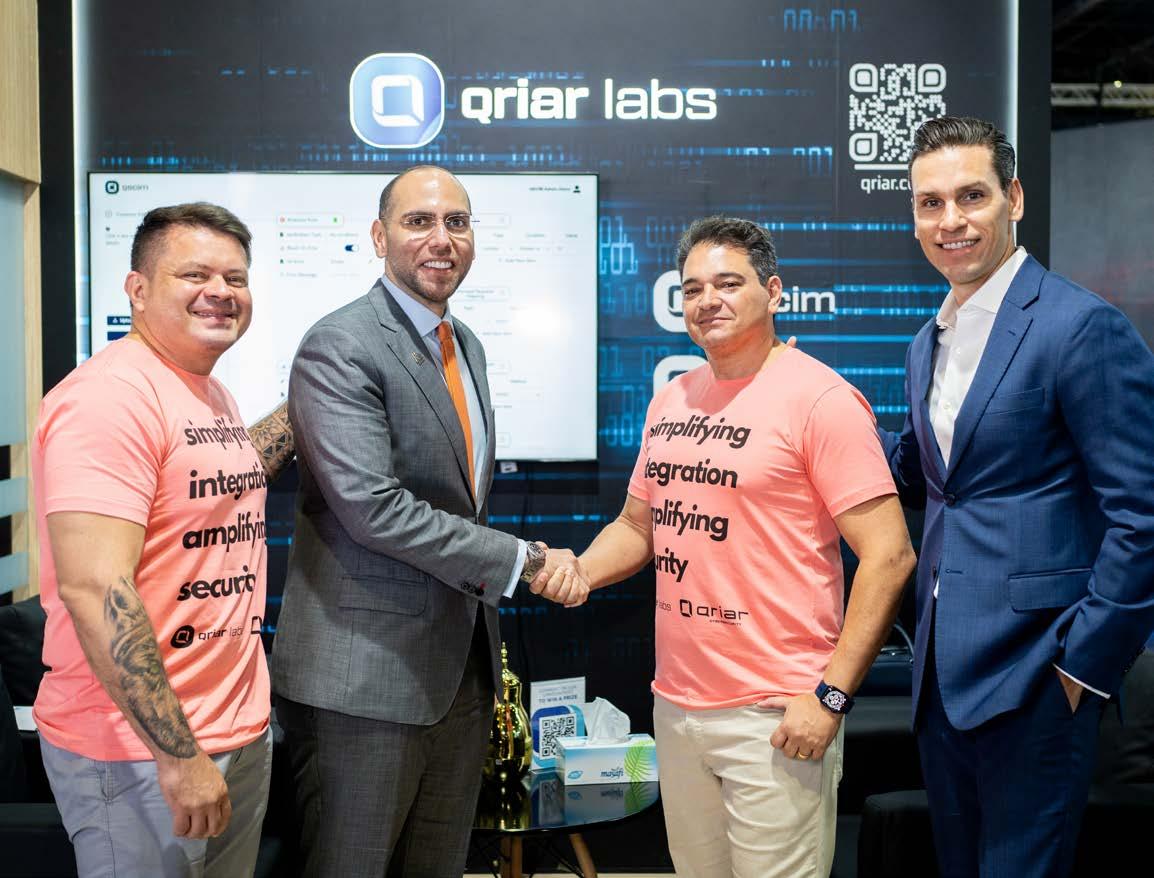
that what QriarLabs is doing is totally unique in the market.
“Qriar is taking a unique technology into the market. We’ve worked with other vendors on different technologies, but we’ll always find competition in that specific space in terms of that particular product offering. However, when it comes to Qriar they are the only company in the world that does what they do. They are helping businesses to acquire IAM solutions in a very easy and simplistic way. One of the biggest risks that exists in the cybersecurity ecosystem when it comes to IAM space is that many businesses delay
projects around it because of hassle of doing it, which leaves huge gaps for hackers to exploit. In summary, Qriar will make that journey into the IAM space simple, and will remove the complexity that currently exists,” said Handous.
CNME then spoke to Edgar Silva, CEO and Co-founder at QriarLabs to learn more about their journey they have undertaken as a company – and how the traditional integration process with IAM was a painstaking process that their technology is now eliminating.
“The problem with a lot of solutions in the IAM space is the fact that they are not
easy to integrate, and the implementation process can take anywhere from 6-9 months. Our mission at QriarLabs is to make the journey as simple as possible. There is a commonality of challenges facing customers, and it’s our job to create a solution that ultimately helps them address that problem, but it’s crucial that we achieve that by making the experience as painless as possible for the customers,” said Silva.
Silva added that many vendors will claim that they can deliver an IAM integration is a painless way, but according to Silva that is simply not true.


“There are a lot of vendors will tell you that they can deliver the integration process in a seamless way, but it’s not true. However, with Qriar labs we can do this and we have already proved it. We have worked with some customers in Brazil, and we’ve taken the implementation process down from 9 months to 2 months. The technology we have is a gamechanger, and not only for us, but for our distributors like MEA Tech, as they now can go to the market and say, look we really have a solution that can really help you,” said Silva. He also stated that the partnership agreement with MEA Tec Distribution was a perfect fit for QriarLabs.
“We’re entering a market that we have very little knowledge about, so it’s critical that you work with the best partners to go into that market in order to effectively sell our products, and MEA Tech certainly fits the bill for us. You need to work with partners that understand the market, and have the trust and respect of the IT and technology ecosystem across the Middle East region – and that is certainly something that we can see from our conversations here at GISEC that MEA Tec Distribution has,” said Silva.
Almir Menezes, CEO, Cofounder and Board member at Qriar Technologies, highlighted the data sensitivities that exists
in the UAE, and across the GCC region.
He pointed out that another key advantage for QriarLabs is the fact that they offer an onpremises model.
“We can offer customers a SaaS model, but we also have the ability to offer an on-premises model. We know that local customers want their data to reside in the UAE. We participated at the Cyber Stars start-up competition and a recurring question we were asked was how can me deliver this kind of managed services request from public sector entities across the UAE. However, we are agile, and we can provide both a SaaS and on-prem model, so we really can cater to whatever the market demands are. Data sovereignty is a key issue here, and the fact we can provide this for businesses across the Middle East region gives us a great market advantage,” said Menezes.
CNME Editor Mark Forker then brought Juliano Itabaiana, Chief Growth Officer, at 2Futureholding into the conversation.
2Future is an investor of Qriar Technologies and QriarLabs.
2Future Holding is a Future Capital firm that connects people, ideas, and transformative businesses.
2Future is a single-family office with perpetual capital,
Qriar Labs is an enabler, and our solution is a facilitator to give customers the freedom that they both want and need to decide what kind of IAM solutions, privileged access management and API orchestrations they have as a custodian.”

headquartered in Brazil with offices in the USA, Europe, and the Middle East.
With a keen eye for identifying emerging trends and seizing opportunities, 2Future supports audacious entrepreneurs and start-ups creating solutions to some of society’s biggest challenges.
Itabaiana reiterated what had already been said by declaring that what QriarLabs is bringing to the table is totally unique.
He also noted how the company can remove the issue of vendor lock-in for many businesses.
“What QriarLabs is bringing to the table is the fact that absolutely nobody else is able to do what we are doing. The common problem that key vendors and distributors face is worldwide, and that is when a customer becomes a hostage of an exclusive vendor, and you’re unable to onboard different
solutions because these solutions don’t communicate to each other. Ultimately, that’s why the integration process is so protracted, costly and complex because they are locked-in. Qriar Labs is an enabler, and our solution is a facilitator to give customers the freedom that they both want and need to decide what kind of IAM solutions, privileged access management and API orchestrations they have as a custodian,” said Itabaiana.
Almir Menezes concluded a brilliant conversation by summarizing just exactly what it is that QriarLabs provides for its customers.
“We can offer flexibility to businesses because we allow them to work with the IAM solution that they want, there is no lock-in. We provide low-costs because we can deliver products faster. I think what I love the most about what we can do is the fact that our customers can work with more than one vendor at the same time. The reason we are so enterprise focused, by default enterprises run several different types of applications, especially if they are worldwide then a lot of the time these applications don’t communicate to each other. Our solution creates an ecosystem in which they communicate to each other, especially on provisioning and deprovisioning access, because that’s the No.1 threat in the cybersecurity industry – and that is why we are so confident that through our partnership with MEA Tec we are going to enjoy a lot of success here in the Middle East,” said Menezes.











